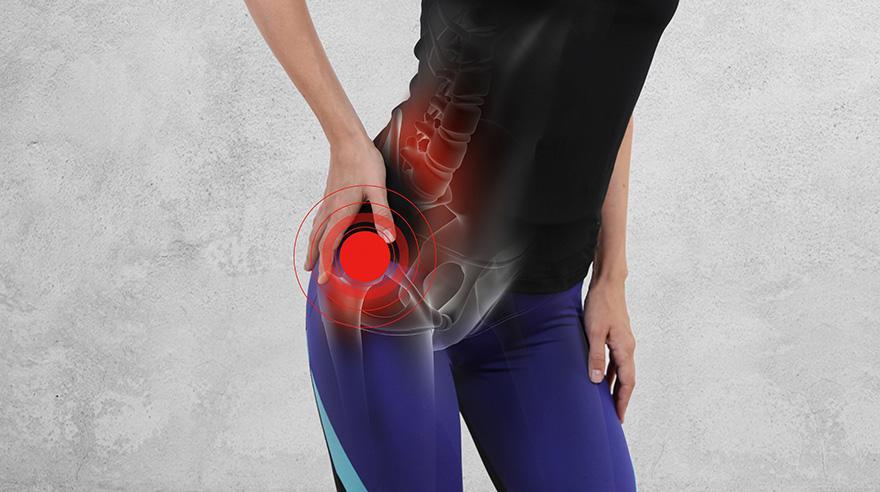
Your hip joint is not unlike a bungee cord in that it’s both sturdy and flexible. This ball-and-socket joint is your body’s largest, and it carries the weight of your body and allows for a wide range of movement.
When hip trikes, however, your movement may be seriously limited, and you may find yourself in unrelenting pain — neither are sustainable.
The expert team at Louisiana Pain Specialists is invested in getting to the root of your hip pain and customizing a treatment plan designed for you and only you, based on your history of pain, its severity, and other factors.
Why have I developed hip pain?
Common causes of hip pain include:
- Osteoarthritis, a degenerative condition that progresses with age and worsens with wear-and-tear use over decades.
- Femoroacetabular impingement (FAI) is caused by friction when the bones of your hip joint rub together; FAI typically affects younger people who frequently engage in rigorous sports activities
- The cartilage band that surrounds the bones of your hip joint is called the labrum. A tear in your labrum compromises the cushioning of your hip that an intact labrum provides, as well as your hip’s overall stability.
- Hip fractures also are a source of hip pain; they’re often the result of a fall, and your risk is higher if you have osteoarthritis.
- Your pelvis is joined to part of your lower spine by the sacroiliac joint and it determines sensations in areas below your pelvis; if your sacroiliac sustains an injury, you might feel hip pain as a result.
- Footwear, like shoes with very high heels, puts undue stress on your hip joint and can cause pain; if habitually worn for long periods, problems with walking comfortably can occur.
You can suffer with hip pain longer than you should if your hip problem is misdiagnosed, which often happens with labral tears. Hip pain can also extend to other parts of your body, such as your groin, your thigh, and your buttocks.
How does my doctor arrive at a diagnosis for my hip pain?
We pride ourselves on evaluating you so completely that at the point of our diagnosis, no stone has been left unturned in terms of researching the origins of your discomfort.
For our patients suffering from pain and mobility issues because of hip problems, we conduct a highly detailed interview about how long the patient has suffered, what sports they play and how often they work out, what symptoms have appeared, and whether the pain is chronic or intermittent.
Imaging tests, such as magnetic resonance imaging (MRI) and computerized tomography (CT) tests greatly assist us in pinpointing the basis of hip pain. Not only do these tests allow us a better, deeper look at your hip joint, they may reveal an injury. Conversely, a detailed physical exam is critical also, as sometimes that can reveal a problem that an imaging test can’t.
What if conservative treatments don’t help my hip pain?
If steps like taking over-the-counter pain relievers, prescription pain medication, and rest don’t bring relief from your hip pain, we have other, minimally invasive options.
If all other treatments have failed, we have treatments in our toobox that fall between the conservative and surgical ends of the spectrum. One such treatment that helps many is an in-office hip pain injection.
During the procedure, you get in a comfortable reclining position, we clean and sterilize the area where you are to receive the injection, and we give you a local anesthetic, so you’re numb during the procedure.
It’s common for your doctor to use an X-ray tool called a fluoroscope that acts as a guide to the point in your hip joint that’s treated. Your doctor injects a small amount of contrast dye to confirm the position of the needle. Once this step is completed, we inject your hip with a combination of anesthetic and steroid medication.
A hip pain injection takes just a few minutes, and your entire visit typically lasts under an hour. Injections are successful hip pain treatments, reducing both the pain and inflammation that can so reduce your quality of life.
Two or three days after your treatment, you feel significant relief. Sometimes you need as many as three injections to get optimal benefits.
If hip pain plagues you, you’ve suffered long enough. It may be time to consider injections or other mininally invasive interventions that can provide lasting relief.
Another treatment option for hip pain that is less invasive than major surgery is a minimally invasive SI joint fusion. This procedure promotes the growth of bone over the sacroiliac joint to create an immobile joint construction. The purpose is to restore some stability to the joint and hip, reduce inflammation caused during joint movement, and reduce or alleviate pain. Louisiana Pain Specialists is among the leaders in the Gulf Coast region in performing this procedure.
If you or a loved one are tired of suffering from hip pain, contact us today to make an appointment with one of our physicians. Let us help you take your life back from chronic pain.
